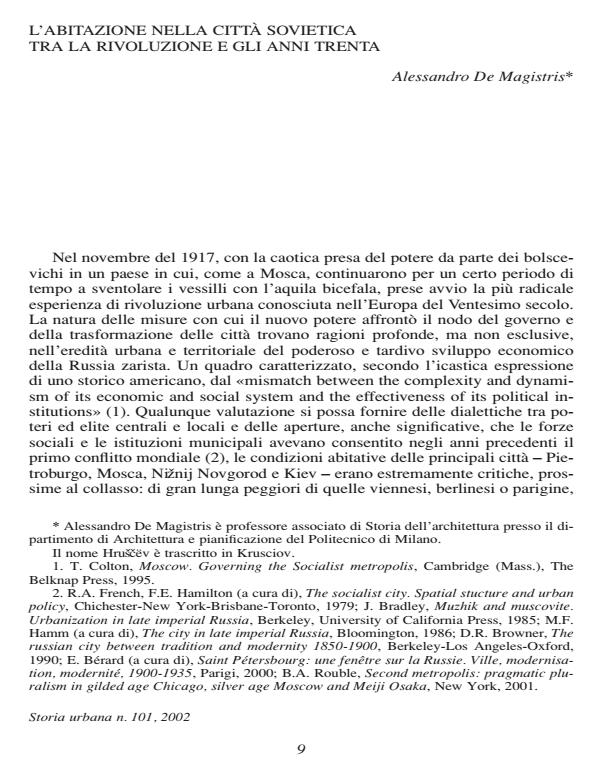L'abitazione nella città sovietica tra la rivoluzione e gli anni trenta
Titolo Rivista STORIA URBANA
Autori/Curatori Alessandro De Magistris
Anno di pubblicazione 2003 Fascicolo 2002/101 Lingua Italiano
Numero pagine 41 P. Dimensione file 575 KB
DOI
Il DOI è il codice a barre della proprietà intellettuale: per saperne di più
clicca qui
Qui sotto puoi vedere in anteprima la prima pagina di questo articolo.
Se questo articolo ti interessa, lo puoi acquistare (e scaricare in formato pdf) seguendo le facili indicazioni per acquistare il download credit. Acquista Download Credits per scaricare questo Articolo in formato PDF

FrancoAngeli è membro della Publishers International Linking Association, Inc (PILA)associazione indipendente e non profit per facilitare (attraverso i servizi tecnologici implementati da CrossRef.org) l’accesso degli studiosi ai contenuti digitali nelle pubblicazioni professionali e scientifiche
This paper analyzes living conditions in Czarist Russia during the years preceding World War I and housing policies implemented during the revolutionary period of the Soviet Union, between 1917 and the end of the 1930’s. The period being examined finds itself sandwiched between wartime communism and the first five-year plans of the Stalinist era. This study implements first-hand sources and ample Russian and Soviet literature published, above all, following the opening of the archives. Housing construction and its impact, especially in Moscow and Leningrad, is analyzed with particular attention paid to the plurality of the actors involved. The «socialist» city appears as the result of diverse housing decisions where public agencies, private bodies, and building cooperatives were mobilized. The housing policies inspired by «integral socialism» during the three years from 1918 to 1921 are followed by those marked by a return to the market, or the model of mixed urban economy drafted by the New Economic Policy (NEP). During the years of forced industrialization, marked by a rapid growth in urban populations and a worsening of living conditions, the character of the Soviet city of the 1930’s comes into being: anti-egalitarianism, the growing control of industrial enterprises by ministerial bodies, and the establishment of the hierarchy of urban forms.;
Alessandro De Magistris, L'abitazione nella città sovietica tra la rivoluzione e gli anni trenta in "STORIA URBANA " 101/2002, pp , DOI: